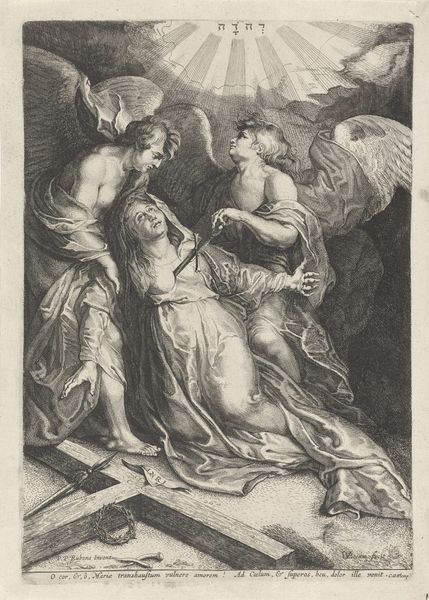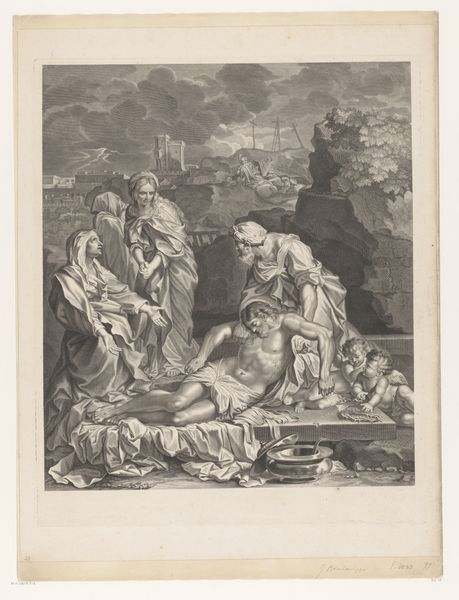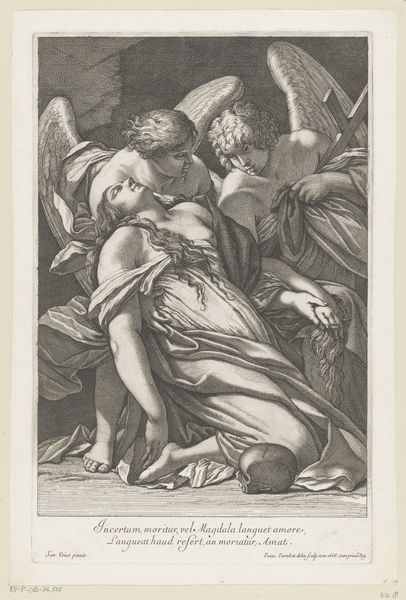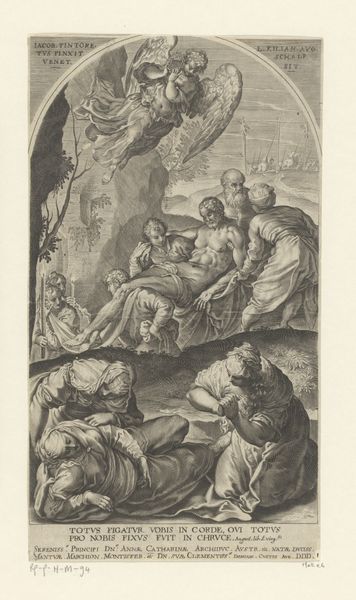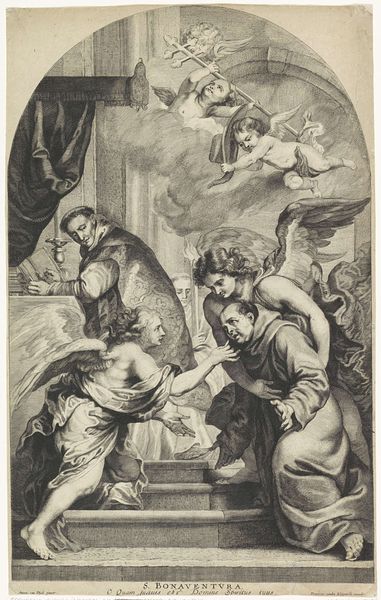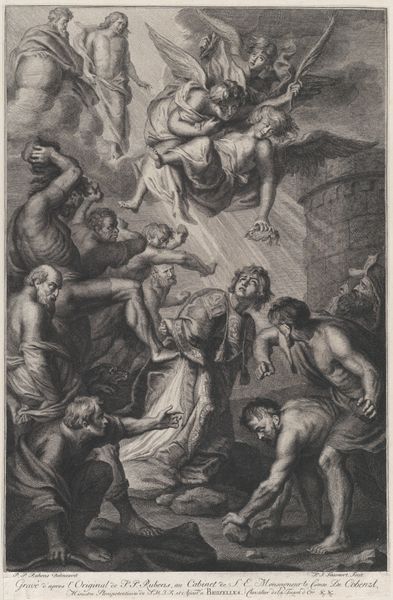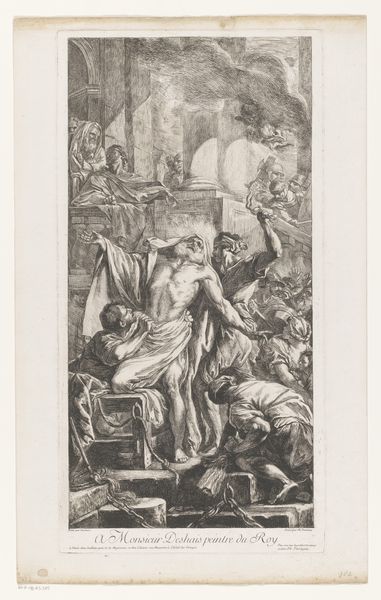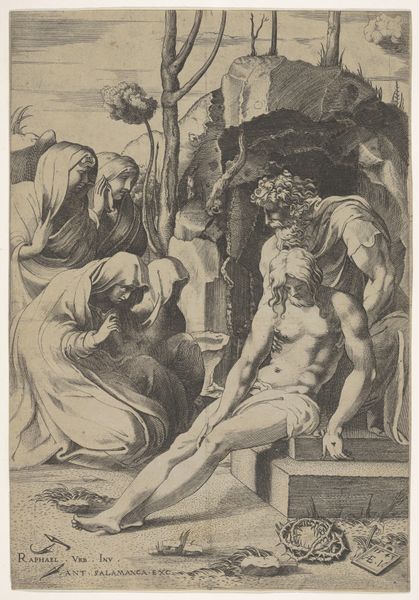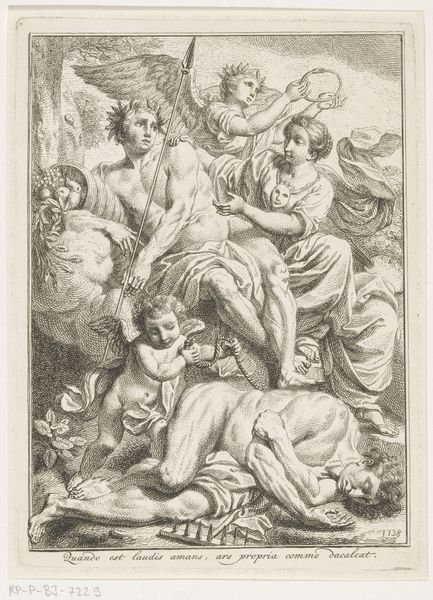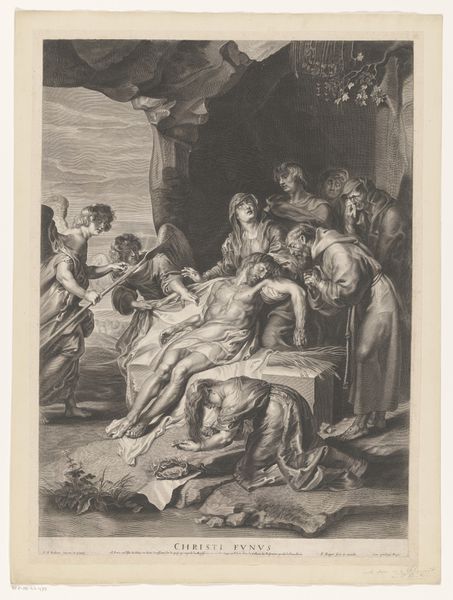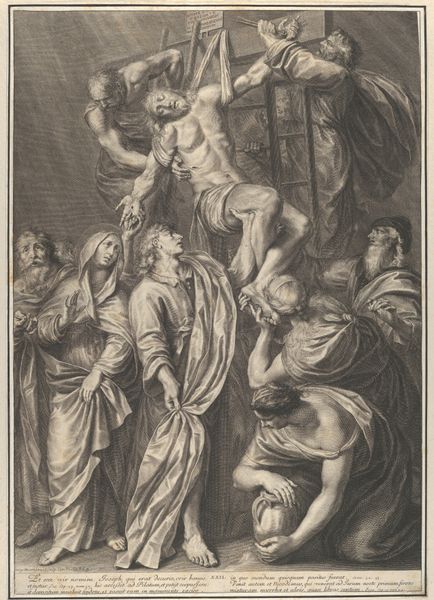
print, engraving
#
baroque
# print
#
figuration
#
history-painting
#
engraving
Dimensions: height 551 mm, width 422 mm
Copyright: Rijks Museum: Open Domain
Curator: The emotional weight in this engraving immediately strikes me. The stark contrast of light and shadow contributes to an overwhelming sense of solemnity. Editor: This engraving, titled “Entombment by Two Angels," was created sometime between 1614 and 1678 by Pierre Daret. The Rijksmuseum holds this work in its collection. For me, it speaks powerfully to notions of mourning, sacrifice, and ultimately, transcendence. Curator: Yes, and the composition is cleverly structured. See how the artist arranges the figures in a pyramidal shape, focusing our eyes on the body of Christ. The textures, achieved through meticulous engraving, give volume and depth. There's a real sense of drama at play, wouldn't you say? Editor: Absolutely. Contextually, within 17th-century Europe, religious art functioned as a powerful tool for both instruction and emotional manipulation, particularly after the Counter-Reformation. Images of Christ's suffering were intended to provoke empathy and devotion. Curator: Consider the role of angels here. They represent not just divine intervention, but a spiritual elevation of the human condition. It speaks of a time of great socio-religious turmoil and seeks ways of bringing some stability, or a message to aspire to. The composition certainly has a grounding effect too. Editor: But there's more than just religious narrative here. We also get an understanding of power relations of the era – particularly surrounding class. Someone of this class having an entombment such as this highlights privilege. Curator: And that coat-of-arms visible on the lower edge certainly solidifies your point! The figures convey grief but are also positioned to suggest peace in death. Editor: It’s a somber meditation that offers us the chance to witness the profound relationship between religion and identity. The formal properties heighten the effect, underscoring a historical reality of struggle and piety in art. Curator: Examining how its structure, texture, and light reinforce such powerful emotions, helps us perceive our history with all of its socio-political implications and the power that has always been there with visual messaging.
Comments
No comments
Be the first to comment and join the conversation on the ultimate creative platform.
